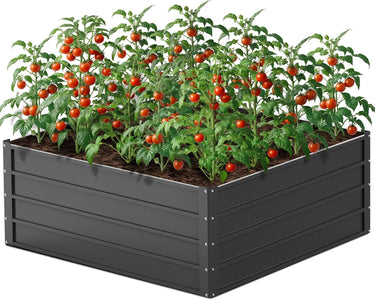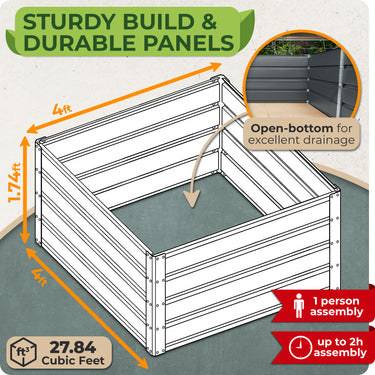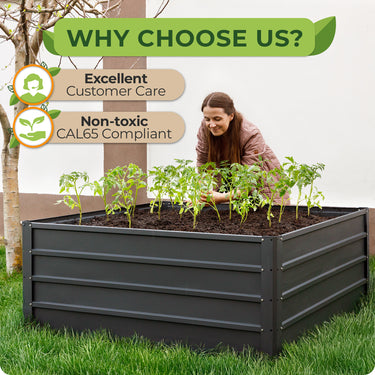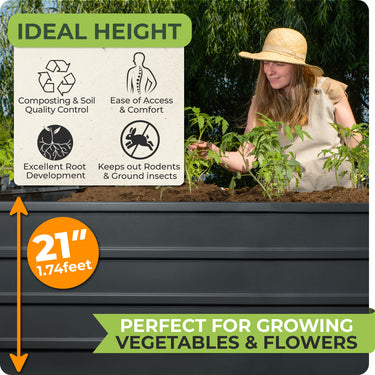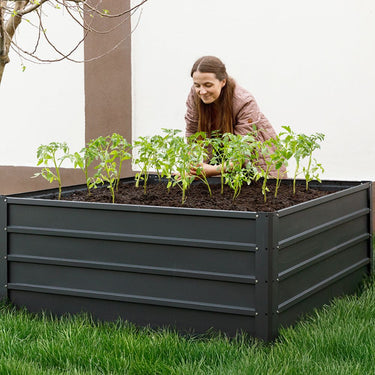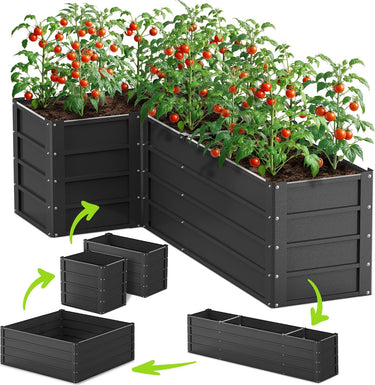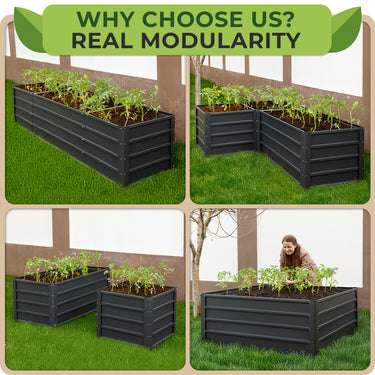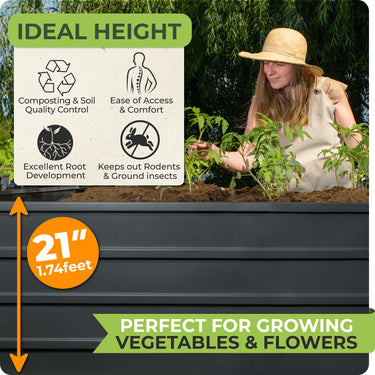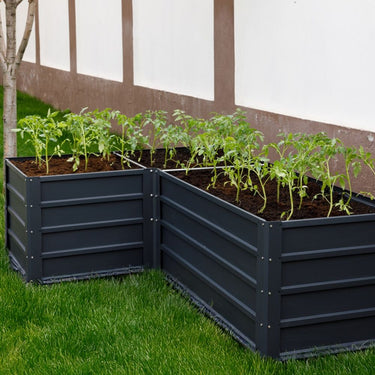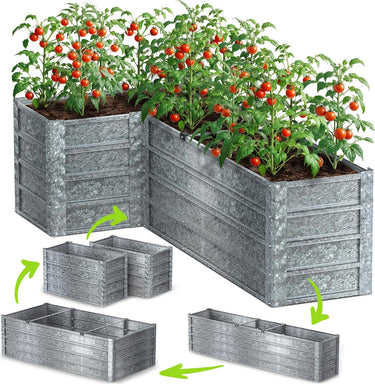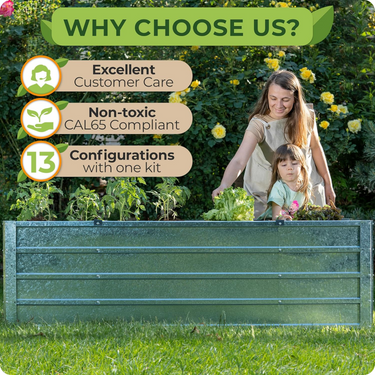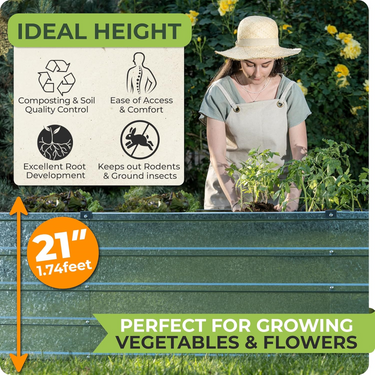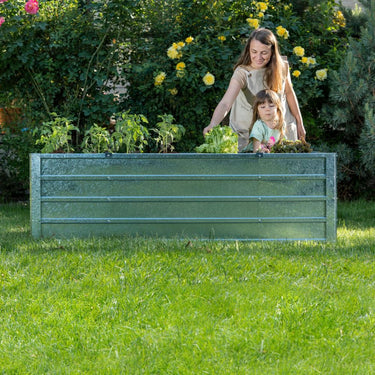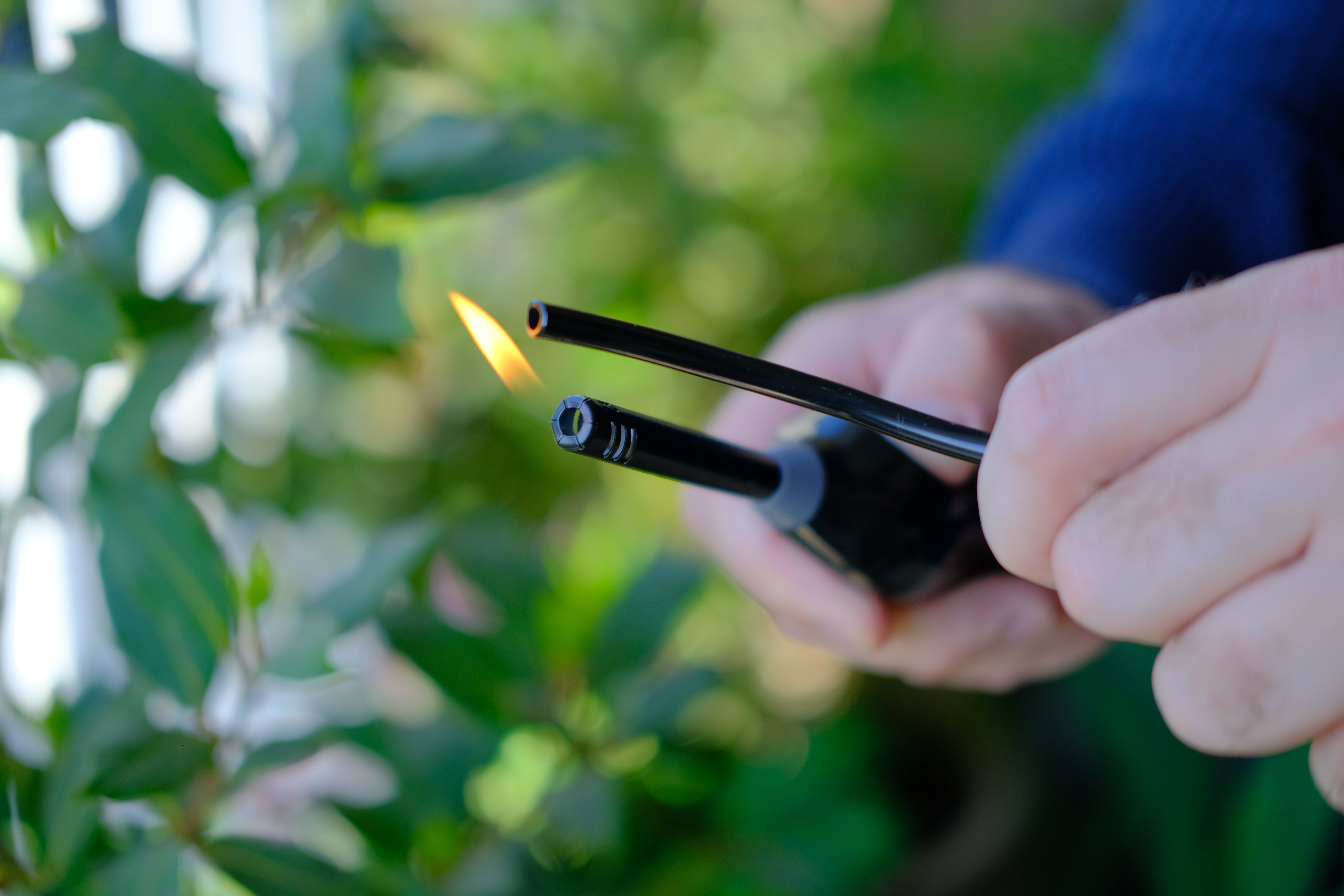
Table of Contents
- 1. Gardening tips for beginners - useful advice for a beautiful garden
- 2. Plant care guide - the best choices for outdoor plants
- 3. How to maintain healthy outdoor plants - advice for proper plant care
- 4. How to take care of plants in different seasons - tips for the perfect year-round outdoor garden
1. Gardening tips for beginners - useful advice for a beautiful garden

Photo source: Shutterstock
For those new to gardening, the prospect of starting and maintaining a thriving outdoor space can seem daunting. However, with the right guidance and a little patience, even a beginner can create a stunning garden. Here are some essential plant tips to help you get started on the path to gardening success:
➤ Assessing your growing conditions - the first step in successful gardening is understanding the unique growing conditions of your outdoor space. Take the time to evaluate factors such as sunlight exposure, soil type, and microclimate. This information will guide you in choosing the right plants that are well-suited to your specific environment.
➤ Selecting the right plants - with an understanding of your growing conditions, you can begin selecting the plants that will thrive in your garden. When choosing plants, consider their mature size, sun and water requirements, and overall maintenance needs. Opt for hardy, low-maintenance varieties that are known to perform well for beginner gardeners. Some excellent plant choices include perennials like Coneflowers, Lavender, and Hostas, as well as easy-to-grow annuals such as Marigolds, Zinnias, and Petunias.
➤ Preparing the soil - healthy soil is the foundation for a thriving garden. Before planting, take the time to amend your soil by incorporating organic matter, such as compost or well-rotted manure. This will improve the soil's structure, nutrient content, and water-holding capacity. Additionally, consider incorporating modular raised garden beds, which can improve drainage and make tending to your plants easier. Raised beds allow you to customize the size and shape to fit your available space.
Also, when planting your selected outdoor varieties, be sure to dig holes that are the appropriate depth and width to accommodate their root systems. Proper planting techniques will ensure the long-term health and vigor of your garden plants.
➤ Planting and transplanting techniques - proper planting and transplanting techniques are crucial for the long-term health of your plants. When planting, dig holes that are the appropriate depth and width for the root ball, and be sure to handle the plants gently to avoid damaging the roots. For transplanting, choose the right time of year, typically in the spring or fall, and carefully remove the plant from its current container or growing location, taking care not to disturb the roots.
➤ Watering and feeding your plants - consistent and appropriate watering is essential for the survival and growth of your plants. Learn to recognize the signs of under- or over-watering, and adjust your watering schedule accordingly. Additionally, feed your plants with a balanced fertilizer to provide the necessary nutrients for optimal growth and flowering. Follow the instructions on the fertilizer packaging and apply at the recommended intervals. For an efficient watering system, integrate a drip irrigation setup. Drip irrigation uses tubing to slowly deliver water directly to the roots of your plants, minimizing water waste and ensuring your garden receives the moisture it needs. But drip tubing comes in various sizes, each designed for different applications.
For instance, 1/2 inch drip tubing is ideal for larger areas where a higher flow rate is required to cover more extensive garden beds. On the other hand, 1/4 inch drip tubing is best suited for smaller, more precise applications, such as watering individual plants or containers. Meanwhile, 5/16 inch drip tubing offers a middle ground, providing versatility for medium-sized areas or when precise water delivery is needed without the high flow of larger tubing. Selecting the appropriate drip tubing ensures that your plants receive the optimal amount of water, promoting healthy growth and efficient use of resources.
➤ Maintaining a healthy garden - ongoing maintenance is key to keeping your garden thriving. Regularly remove weeds, which can compete with your plants for water and nutrients. Applying a layer of organic mulch around your plants can also help suppress weed growth and retain soil moisture. Be vigilant in monitoring your plants for signs of pests or diseases, and address any issues promptly to prevent further damage.
By implementing these gardening tips for beginners, you'll be well on your way to creating a beautiful, low-maintenance outdoor space that you can enjoy for years to come. Remember, gardening is a continuous learning process, so don't be afraid to experiment and adjust your approach as you gain more experience.
2. Plant care guide - the best choices for outdoor plants

Photo source: Shutterstock
When it comes to creating a thriving and visually appealing outdoor garden, the key lies in selecting the right plants for your specific growing conditions. Choosing the appropriate plants is essential, as each variety has unique characteristics, care requirements, and adaptations to particular environments. By understanding the specific needs and characteristics of these recommended outdoor plants, you'll be able to create a flourishing, low-maintenance landscape that you can enjoy for years to come.
- Perennials:
➜ Coneflowers (Echinacea) are vibrant, daisy-like blooms that grace the garden with an extended flowering period, typically from mid-summer to fall. Thriving in full sun and well-drained soil, their showy flowers attract pollinators like bees and butterflies.
➜ Lavender is a fragrant and silver-green shrub that excels in hot, dry conditions. These aromatic plants prefer full sun exposure and lean, well-draining soil, making them a delightful choice for borders, rock gardens, or low-maintenance groundcover.
➜ Lush and shade-loving, Hostas boast a wide array of sizes, shapes, and colors, ranging from deep green to variegated. They flourish in partial to full shade and moist, well-amended soil, rendering them an excellent selection for shaded garden beds or beneath trees.
- Annuals:
➜ Marigolds, with their cheerful, pungent blooms in shades of yellow, orange, and red, are not only a visual delight but also serve as natural pest deterrents, helping to repel aphids, rabbits, and other unwanted visitors. These annuals thrive in full sun and well-drained soil.
➜ Brimming with vibrant colors and long-lasting displays, Zinnias are a joy to cultivate. Their tolerance for full sun and a wide range of soil types render them an excellent choice for beginner gardeners.
➜ Available in a rainbow of colors and a variety of growth habits, from cascading to upright, Petunias perform best in well-drained soil and thrive in hot, dry conditions, making them a popular selection for containers, hanging baskets, and garden beds.
- Shrubs:
➜ Known for their large, showy flowers that bloom in shades of blue, pink, purple, and white, depending on the soil pH, Hydrangeas are versatile shrubs that prefer partial shade and moist, well-draining soil, making them wonderful additions to mixed borders or as standalone specimen plants.
➜ Vibrant and colorful, Azaleas are flowering shrubs that thrive in acidic, well-drained soil and partial shade, offering a range of hues from soft pastels to bold, fiery shades, and making them a fantastic choice for foundation plantings or woodland gardens.
➜ Boxwoods are versatile and dense that excel as low-growing hedges, foundation plantings, or individual specimens, tolerating a wide range of soil types and light conditions, ensuring their reliable presence in the landscape.
- Trees:
➜ Crape Myrtles, known for their exfoliating bark that reveals beautiful, multi-colored trunks, are stunning, summer-flowering trees that thrive in full sun and well-drained soil, and they come in a variety of sizes to suit different garden spaces.
➜ Japanese Maples are graceful flowers, with lacy foliage that offers a stunning display of colors, especially in the fall. These delicate flowers prefer partially shaded locations and well-drained, acidic soil, making them wonderful additions to woodland gardens or as focal points in small yards.
➜ Breathtaking Flowering Cherries herald the arrival of spring with their showy, ephemeral blooms, adding seasonal beauty to any garden. These trees require full sun exposure and well-drained soil, rendering them a popular choice for their captivating floral display.
➜ Vegetables such as tomatoes, peppers, and cucumbers are staples in many gardens. They require plenty of sunlight, well-drained soil, and consistent watering. Ensure they have adequate space for growth and provide support as they mature.
➜ Fruit plants like strawberries, blueberries, and apple trees add both beauty and bounty to your garden. Each has specific needs, such as acidic soil for blueberries or plenty of sunlight and space for apple trees. Regular pruning and proper care will help them produce a delicious harvest.
➜ Leafy greens such as lettuce, spinach, and kale are excellent choices, because they grow quickly and can be harvested multiple times throughout the growing season. Ensure they are planted in rich soil and shaded during the hottest part of the day to prevent bolting.
3. How to maintain healthy outdoor plants - advice for proper plant care

Photo source: Karolina Kaboompics on Pexels
Maintaining healthy outdoor plants is key to having a thriving garden, and it’s essential to follow a few basic yet effective plant care instructions. Whether you're a seasoned gardener or just getting started, understanding how to care for outdoor plants properly is crucial. One of the first things to remember when learning how to take care of outdoor plants is that different species require varying levels of attention. However, there are general practices that apply to most outdoor plants. For example, watering is a crucial aspect of plant care for beginners. Always water early in the morning or late in the evening to reduce evaporation, ensuring that the roots can absorb the necessary moisture.
Here are 5 ways to take care of plants effectively:
➤ The importance of soil care
A key to caring for garden plants is knowing the importance of proper soil and water management. Ensure that the soil is well-drained and rich in nutrients. The best ways to take care of plants effectively include regular watering, mulching to retain moisture, checking soil pH levels, feeding plants with organic fertilizer, and avoiding waterlogging. Mulching is one of the best plant tips and tricks to regulate soil temperature and keep weeds at bay, ultimately helping to keep your garden healthy.
➤ Pest management
To maintain healthy plants, regular pruning is vital. This promotes airflow and removes any dead or diseased parts of the plant, reducing the risk of infection. Some great tips for growing plants outdoors include paying attention to pest control. Identifying and addressing pests early can prevent widespread damage. Natural pest deterrents, such as companion planting, are excellent plant care instructions to follow. For instance, planting marigolds near vegetables can repel harmful insects, ensuring your plants stay protected without the need for chemicals.
➤ Sunlight and feeding
Understanding how to take care of a plant outdoors involves monitoring its exposure to sunlight. Make sure your plants are placed in optimal locations, based on their light requirements. Some may need full sunlight for most of the day, while others thrive in partial shade. Additionally, feeding your plants with the right nutrients is essential to keeping them strong and vibrant. Use fertilizers tailored to the specific needs of your plants. Organic options are great for slow-release feeding, a method highly recommended for keeping your garden healthy.
➤ Long term care
Seasonal changes bring their own challenges. During colder months, you might need to provide protection by covering vulnerable plants or moving pots indoors. This is one of the many ways to take care of your garden through different seasons. In the growing season, focus on how to care for garden plants by keeping up with regular maintenance like weeding, watering, and fertilizing. Ensuring your outdoor plants remain healthy year after year involves staying consistent with your care routine. Simple plant tips and tricks like rotating your plant positions and using rainwater for irrigation can make a big difference over time. Following these strategies can not only enhance plant growth but also prevent future issues from developing.
➤ Proper planting techniques
Another crucial aspect of plant care is ensuring you plant correctly from the start. When planting, make sure to dig a hole that is wide and deep enough for the root system to spread out. Place the plant at the correct depth, usually level with the soil surface, and gently pack the soil around the roots to eliminate air pockets. Water thoroughly after planting to help settle the soil and establish the roots. Using high-quality, well-draining soil and incorporating compost can also give your plants the best start and support their long-term health.
4. How to take care of plants in different seasons - tips for the perfect year-round outdoor garden

Photo source: Greta Hoffman on Pexels
Maintaining a vibrant and healthy outdoor garden requires adjusting your plant care routine to match the changing seasons. From the first signs of spring to the depths of winter, there are specific tasks and techniques that will help your plants thrive all year long. Here are some seasonal gardening tips to ensure your outdoor space looks its best, no matter the time of year:
Spring gardening
As the weather begins to warm and the days grow longer, it's time to prepare your outdoor garden for the growing season. Start by cleaning up any debris or dead foliage left over from the winter months. This will help prevent the spread of pests and diseases as new growth emerges.
Next, evaluate your soil and consider amending it with compost or other organic matter to provide essential nutrients for your plants. This is also an excellent time to divide and transplant perennials, such as Coneflowers, Lavender, and Hostas, to encourage fuller growth.
Once the threat of frost has passed, you can safely begin planting your annuals, such as Marigolds, Zinnias, and Petunias. Be sure to select varieties that are well-suited to your USDA hardiness zone and provide the appropriate growing conditions, including proper spacing, sunlight, and water.
Summer gardening
As the temperatures rise and your garden bursts into full bloom, regular maintenance becomes crucial. Stay on top of weeding to prevent competition for valuable resources, and apply a layer of organic mulch around your plants to retain soil moisture and suppress weed growth. During the hot, dry summer months, focus on providing consistent, deep watering to your plants, especially newly established ones. Consider setting up a drip irrigation system to efficiently deliver water directly to the root zone.
Deadhead spent flowers on annuals and perennials to encourage continued blooming and a tidy appearance. Additionally, monitor your plants for any signs of pests or diseases and address issues promptly to maintain their health and vigor.
Fall gardening
As summer transitions into autumn, it's time to start preparing your garden for the coming winter. Begin by cutting back perennials, such as Coneflowers and Hostas, once their foliage has died back naturally. This helps the plants direct their energy into their root systems for better overwintering.
If you have shrubs like Hydrangeas, Azaleas, or Boxwoods, now is the time to prune them to maintain their shape and structure. Avoid pruning trees, as this can stimulate new growth that may not have time to harden off before winter.
Winter gardening
As the cold weather sets in, your outdoor gardening tasks shift to protecting and caring for your plants through the dormant season. Spread a layer of mulch around the base of your plants to insulate their roots and prevent them from heaving out of the ground during freeze-thaw cycles.
For tender perennials and shrubs, consider wrapping or covering them with burlap or a frost blanket to shield them from harsh winds and freezing temperatures. Avoid pruning during the winter, as this can damage the plants. Though your outdoor garden may appear to rest during the winter months, it's important to continue monitoring your plants and clearing any snow or ice buildup that could weigh down branches or cause damage
Ultimately, learning how to take care of outdoor plants is a rewarding experience. With the right knowledge and tools, you can create a flourishing garden. Following the plant advice shared in this article will help you enjoy a vibrant outdoor space, providing beauty and tranquility. With attention to detail and a little dedication, there are many ways to master and keep your garden lush and healthy all year round.










